Azaleas, part of the genus Rhododendron, are a favorite shrub of many gardeners for their spectacular blooms, with colors ranging from vivid orange to delicate yellow.
This plant, particularly the evergreen azalea variety, is prized for its glossy, dark green leaves that provide color and texture throughout the year. Azaleas also attract various pollinators to your garden, including bees and hummingbirds, adding an element of wildlife interest to your landscape.
Azaleas are known for their resilience, but they have specific growing preferences. They flourish in well-draining, slightly acidic soil, rich in organic matter. A layer of mulch, such as pine bark or pine straw, helps retain soil moisture and keeps azalea roots cool during the heat of summer.
Unfortunately, azaleas can also be susceptible to a variety of pests such as lace bugs, spider mites and aphids. These pests, along with diseases like powdery mildew, petal bligh, and leaf spots, can cause azaleas to struggle.
However, with the right care, these issues can be mitigated, ensuring your azaleas thrive for years to come. As a master gardener, I’ve grown and cared for many over the years and can’t wait to share everything experience has taught me in this complete guide.

Botanical Name: Rhododendron
Common Name: Azalea
Family: Ericaceae
Plant Type: Shrub
Hardiness Zones: 4 – 9 (USDA)
Sun Exposure: Partial shade to full sun
Soil Type: Well-draining, rich in organic matter
Soil pH: Acidic, prefers pH 4.5-6.0
Bloom Time: Spring to early summer
Flower Color: From white and yellow to orange, pink, and red
Native Area: Asia, North America, Europe
Azalea Plant Care
Azaleas, part of the genus Rhododendron, are aesthetically pleasing shrubs that bring a burst of colors – from yellows to oranges – to your garden with their radiant blooms and evergreen leaves.
To ensure healthy azalea blooms next year, it’s crucial to plant them in well-draining, moisture-retaining soil enriched with organic matter like pine bark or compost.
This rhododendron shrub appreciates slight shade and constant moisture conditions secured by drip irrigation and mulch application, which also suppresses weed growth and maintains favorable soil temperature.
Avoid using too much nitrogen which can lead to less flower buds, encourage leaf spots and make the azalea plant more susceptible to pests like lace bugs, aphids, and spider mites.

On the other hand, azaleas struggle in alkaline soils – easily spotted by looking at rhododendron leaves or azalea leaves that are as yellow as pines – so sulfur may be required to bring the pH down to acceptable levels.
Take special note of the top of the root ball which should be level or slightly above the soil surface to avoid root rot. Regular inspection of your azalea plant is key, as it can suffer from powdery mildew and petal blights.
Yet, the rewards are significant, with these hardy hybrids not only beautifying your landscape but also attracting pollinators like bees and hummingbirds.
Colored pine straw can add an extra touch of beauty while adding to the necessary acidic nutrients that the azalea shrub demands for overall good health.
Light
Azaleas thrive best in locations offering partial shade. They need adequate sunlight for vibrant blooms and bright yellow or orange petal color, but they benefit from being shielded from the intense afternoon sun.
Full sun exposure might result in leaf spots or burn azalea leaves. Pines make for excellent companion plants, as they create natural dappled light ideal for azaleas.
Underneath pines, azaleas can also benefit from falling pine needles, which help maintain a lower soil temperature and provide organic matter.
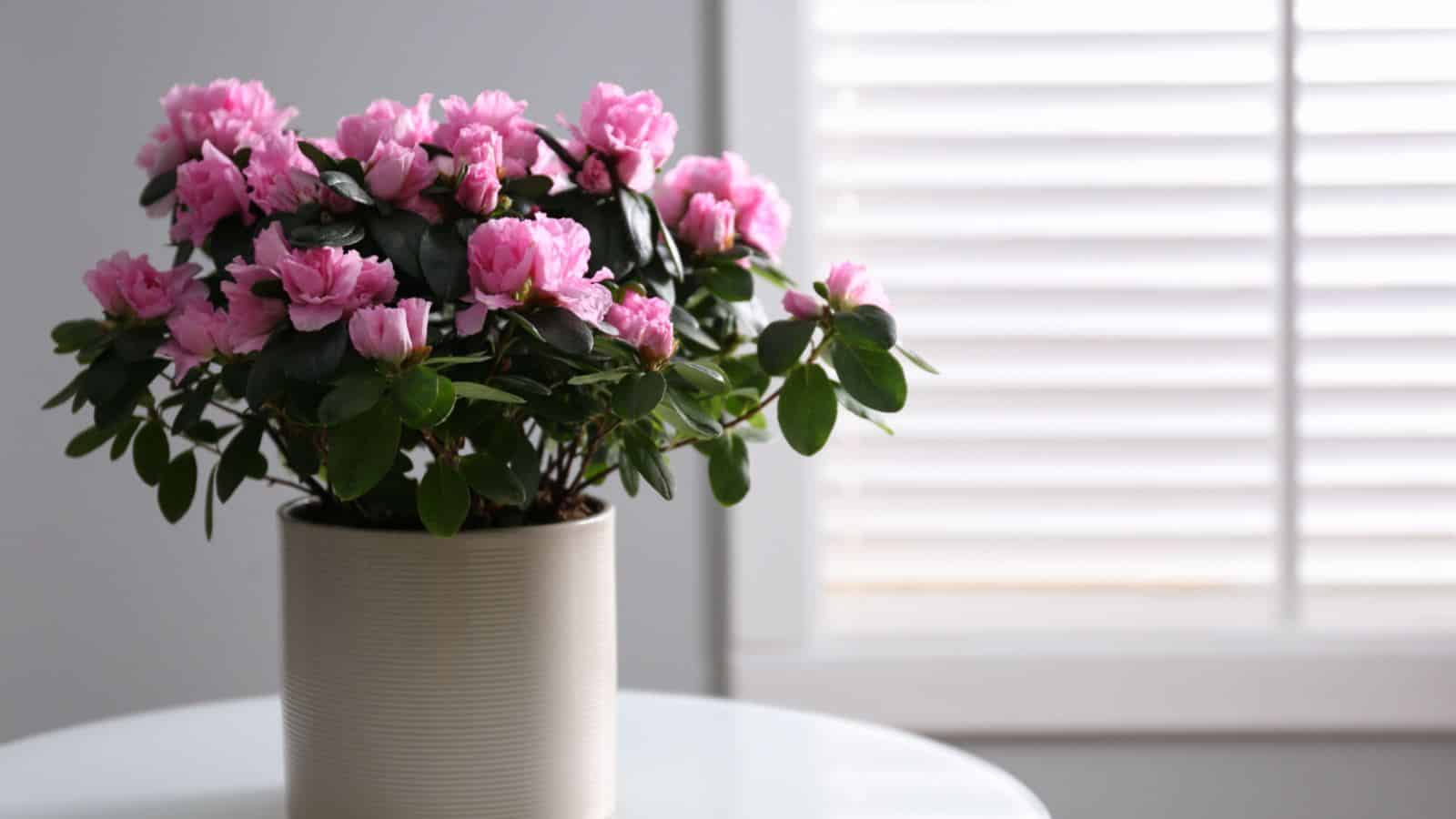
Soil
Azaleas thrive in well-draining, acidic soil rich in organic matter such as compost or pine bark. An overly alkaline soil may lead to yellow azalea leaves, a clear sign of nutrient deficiency.
If your garden soil is alkaline, amend it using sulfur or pine needles to decrease the pH. Good drainage is crucial to prevent root rot, a common problem for azaleas planted in waterlogged soil.
Also, consider that soil temperature affects how azaleas absorb nutrients, with cool soils potentially slowing their taking up nitrogen. Finally, a top layer of mulch like pine straw helps retain soil moisture while also discouraging weeds.
Water
Azaleas thrive best in well-draining soil to avoid root rot. Hence, when watering these shrubs, ensure the soil stays moist but not waterlogged.
An excellent way to maintain ideal moisture levels is through the use of drip irrigation, which, compared to overhead watering, reduces the occurrence of leaf spots and diseases like powdery mildew.
During hotter periods, it’s crucial to monitor soil temperature, as excessive heat can dry up the soil quickly and harm the plant. Test for moisture by touching the top of the root ball, if it feels dry, a good soak is needed.
However, be very careful to avoid overwatering, as it’s easy to encourage root rot in these plants if they’re too wet.

Temperature and Humidity
Azaleas have specific temperature and humidity requirements. They prefer cool climates with well-draining soil where the temperature does not usually exceed 85 degrees Fahrenheit and the soil temperature remains relatively moderate.
High humidity levels, coupled with good drainage, retain the ideal moisture content azaleas crave, helping to prevent leaf spots and root rot.
During periods of high temperature and low rainfall, use drip irrigation to maintain moist conditions, taking care not to wet the azalea leaves too much as this can induce infestations of pests like spider mites and lace bugs.
Misting the shrubs during extremely hot weather can help maintain humidity and discourage these pests, thus providing a nurturing environment for your azaleas.
Fertilizer
Nutrients play a vital role in the healthy growth and vibrant blooms of azaleas. Applying a well-balanced fertilizer rich in nitrogen ensures the lush development of both azalea and rhododendron leaves.
In avoiding leaf spots and sustaining overall integrity, it’s good practice to keep the soil well-draining and supplement it with organic matter such as compost.
Alkalized soil can cause the yellowing of leaves, in which case sulfur should be added to reduce the pH.
However, over-fertilization should be avoided as it can lead to root rot and a reduction in the flower buds intended for next year’s bloom.
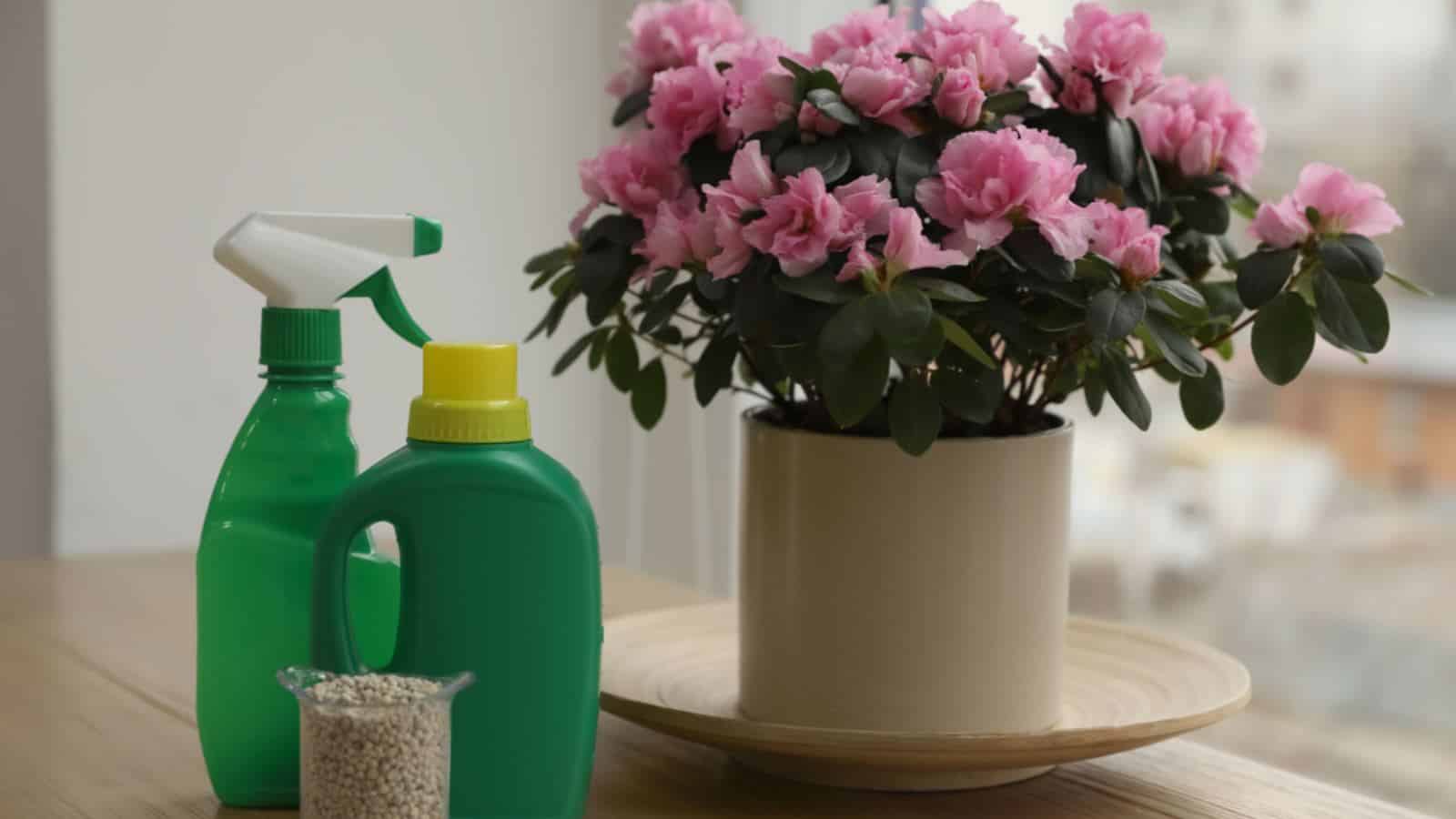
Pruning
Azaleas are fairly low maintenance shrubs but do appreciate a little trimming after their stunning blooms diminish. Strive to prune just above a junction, removing the flower buds that were formed for next year’s show. This encourages healthy growth and abundant blooms in the next season.
Exercise caution, however, as over-pruning can lead to fewer flowers or even the demise of the shrub. Pests such as aphids, lace bugs, and spider mites can take advantage of overly-pruned azaleas, so keeping a balance is key.
Regularly remove any dead or diseased sections to maintain the azalea’s health and vigor. Remember, pruning is ideally done in early spring before the new blooms appear, promoting new growth and a lush display.
Overwintering
Azaleas are particularly vulnerable during harsh winters. To protect these lovely plants, ensure you add a generous layer of mulch such as pine bark or pine straw, which can help control soil temperature and retain essential moisture needed to prevent the azalea roots from freezing.
This cover over the top of the root ball also minimizes disruptions in the evergreen azalea’s preparation for the next year’s blooms. If planted in an area with good drainage, azaleas can avoid root rot, a common issue associated with overwatering and poor drainage in colder months.
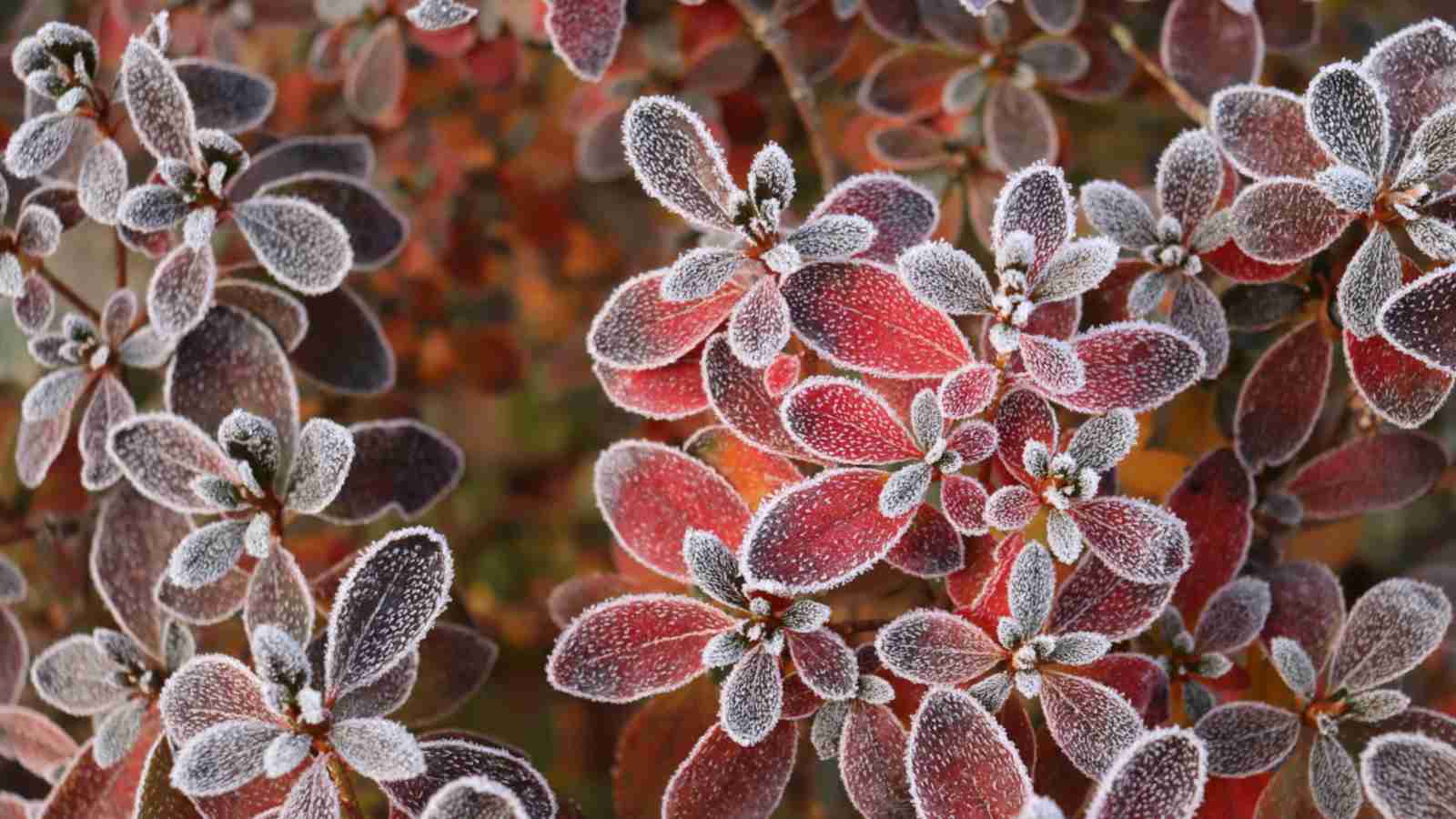
Remember, a well-draining site and properly chosen mulch can play critical roles in the overwintering success of your azalea shrubs.
Types of Azalea
Evergreen Azaleas
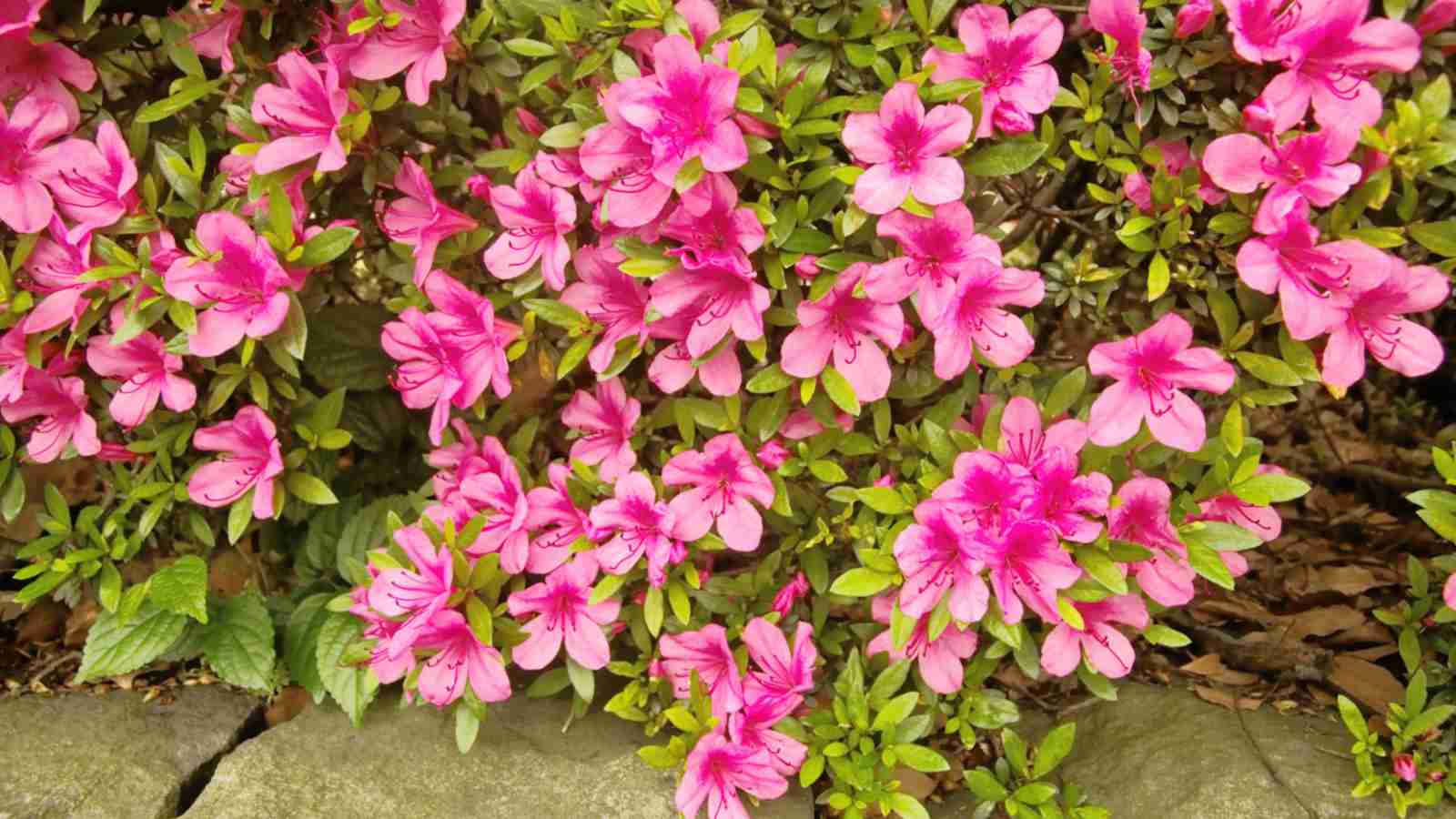
Evergreen Azaleas, often referred to as “the royalty of the garden,” are renowned for the splashes of color they bring to shade gardens. Being a part of the genus Rhododendron, these shrubs maintain their leaves throughout the year, hence the term “evergreen.”
Most hybrids exhibit a range of vibrant blooms with colors that oscillates between white, pink, red, purple, orange, and even yellow. Buds form in the late summer and bloom the next year, offering a long-lasting spectacle.
Deciduous Azaleas
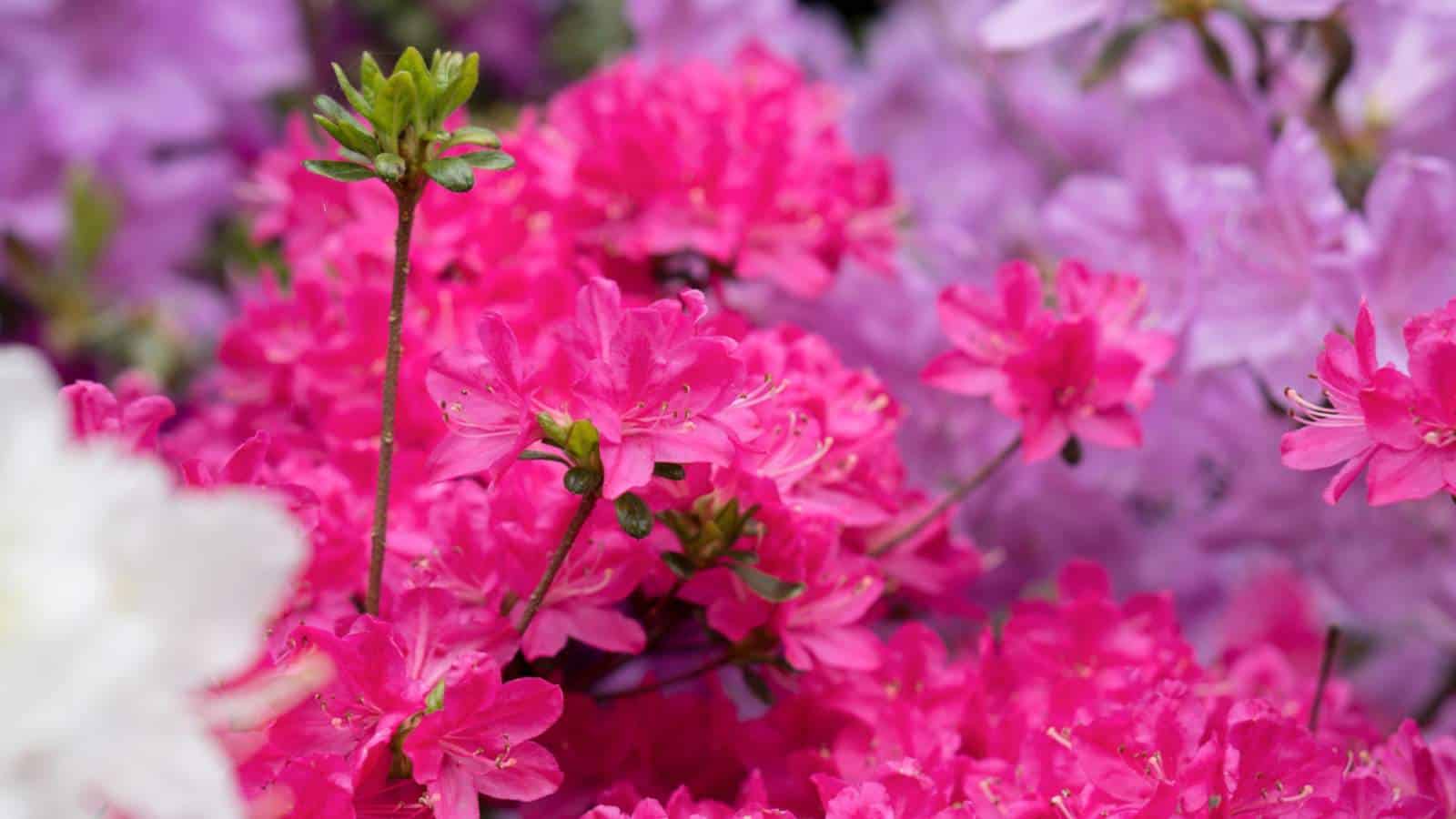
Deciduous azaleas or native azaleas as they are sometimes called, puff out a maelstrom of color in early to mid-spring, before their new leaves emerge. Contrary to their evergreen cousins, they lose their leaves in colder months, revealing an elegant skeleton structure.
Their flowers showcase a wider variety of colors, including electric yellow and bright oranges. They also produce a sweet perfume, attracting pollinators like bees and hummingbirds.
Deciduous azaleas can tolerate a cooler soil temperature compared to their evergreen counterparts.
How to Plant Azalea From Seed
Preparing the Soil
Azaleas prefer well-draining, acidic soil rich in organic matter. Begin by ensuring good drainage, a critical factor in preventing root rot.
Incorporating compost and pine bark into the soil can improve drainage and add vital nutrients. If your soil is too alkalike, an application of sulfur can help adjust the pH.
Covering the top of the ground with pine needles or pine straw can regulate soil temperature and maintain moisture levels, helping the delicate azalea seedlings establish their roots.
Planting the Azalea Seeds
Sow the azalea seeds shallowly, no deeper than the top of the root ball. Next, top the area with a layer of mulch, which will conserve moisture and ward off competing weeds.
While awaiting the emergence of the new azalea leaves, keep the soil evenly moist but not soggy. Ideally, use drip irrigation to prevent overwatering and reduce the likelihood of powdery mildew, a common affliction of this leafy shrub.
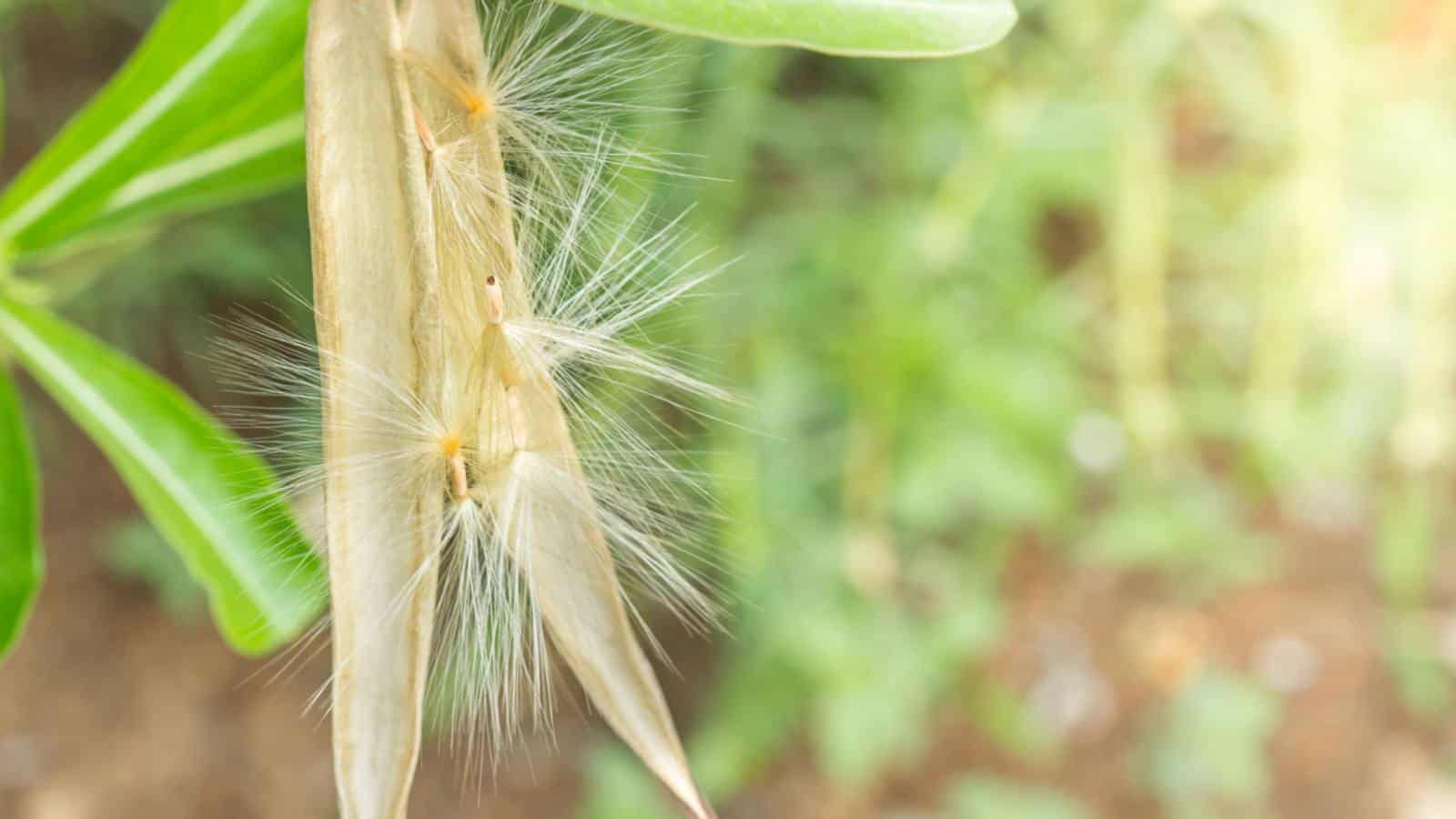
The Year After Planting
In the next year, be vigilant for any pests that could harm your young azalea shrub. These include lace bugs, spider mites and aphids, notorious for causing leaf spots and petal blights.
As the azalea shrub grows and blooms, be sure to continue supplementing the soil with compost and feeding with a nitrogen-rich fertilizer. Azaleas are heavy feeders and will thrive with constant replenishment of nutrients.
Enjoying Your Azalea Shrub
As the years go by, your azalea will reward you with beautiful, enduring blooms that attract pollinators such as bees and hummingbirds, enhancing your garden’s ecosystem.
Always remember that azaleas are shade-loving plants, preferring to be sheltered under pines or large trees, which also contributes to their lush growth.
How to Propagate Azalea
Step 1: Selecting and Preparing the Plant
Choosing the correct azalea plant is paramount for successful propagation. Select an evergreen azalea of the genus Rhododendron with healthy leaves and robust blooms.
Look for shrubs that are free from pests like lace bugs, aphids, and spider mites, as these can hinder growth. Also, steer clear of plants exhibiting leaf spots, a sign of diseases such as powdery mildew or petal blights.

Step 2: Creating the Suitable Soil Mix
Azaleas thrive best in well-draining, acidic soil. Using compost rich in organic matter helps provide the necessary nutrients and maintain soil temperature.
Incorporating pine bark or pine needles into the mix not only improves moisture retention but also aids in maintaining acidity. If your soil is too alkaloid, consider adding sulfur to lower the pH. This step is crucial in preventing root rot.
Step 3: Pruning and Planting
To encourage growth for next year, carefully prune the azalea shrub, leaving several buds. Plant the azalea ensuring that the top of the root ball is level with the soil surface.
This practice helps the plant establish quickly without developing root diseases. Cover with a layer of mulch like pine straw to conserve moisture, regulate soil temperature, and add organic matter to the soil.
Step 4: Watering and Ongoing Care
Water the newly planted azaleas using a drip irrigation system to ensure that the soil remains moist but not soggy. Azaleas require good drainage to prevent root rot.
Yellow or orange azalea leaves are often a sign of overwatering or poor drainage. Regularly check the shrub for pests and apply a nitrogen-rich fertilizer for optimum growth.
How to Pot or Re-pot Azalea
Step 1: Choosing the Right Pot and Soil
For planting azaleas, choose a pot with good drainage as these plants prefer well-draining soil. Use a potting medium rich in organic matter with an acidic pH, as alkalines aren’t suited for the genus Rhododendron, which includes the azalea.
The soil temperature is also a key factor, with cooler environments being preferred. Adding sulfur can further acidify the soil, improving nutrient availability, particularly nitrogen, which is crucial for plant development.
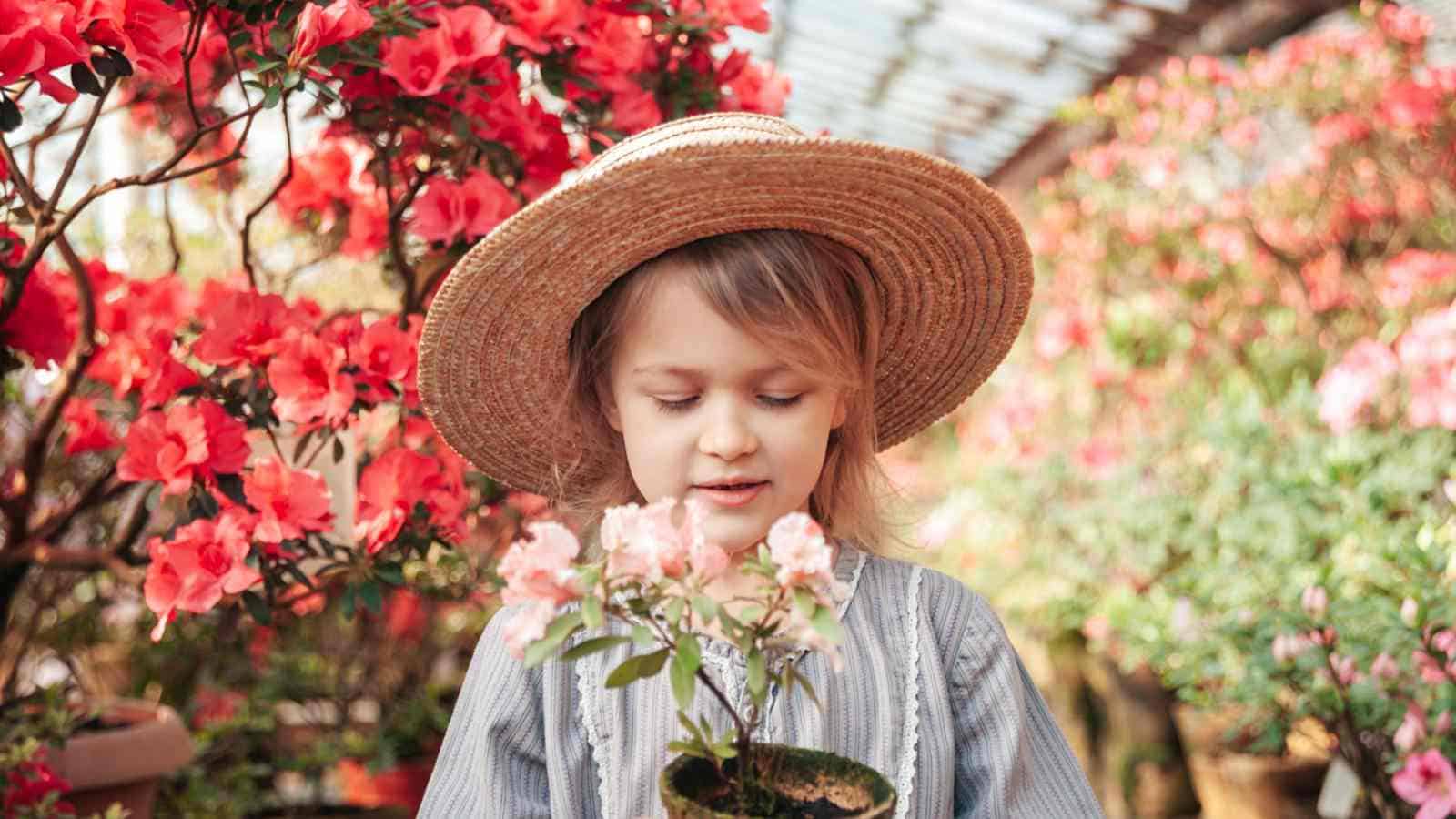
Step 2: Potting or Re-potting the Azalea
Position the azalea in the prepared pot so the top of the root ball is level with the soil surface. Ensure that the soil’s moisture content is retained but isn’t waterlogged to prevent root rot.
A new azalea plant or one that’s ready to be repotted is quite susceptible to rot. Thus, it is essential to monitor the wetness level.
Step 3: Applying Proper Mulching
After potting the azalea, apply mulch to the top layer. This could be pine bark, pine straw, or compost. Adding mulch helps retain moisture, evens out soil temperature, and adds more organic matter to the soil as it breaks down.
Moreover, azalea shrubs, including evergreen azaleas, thrive under pines and benefit from pine needles as mulch.
Common Pests and Plant Diseases for Azalea
Lace Bugs
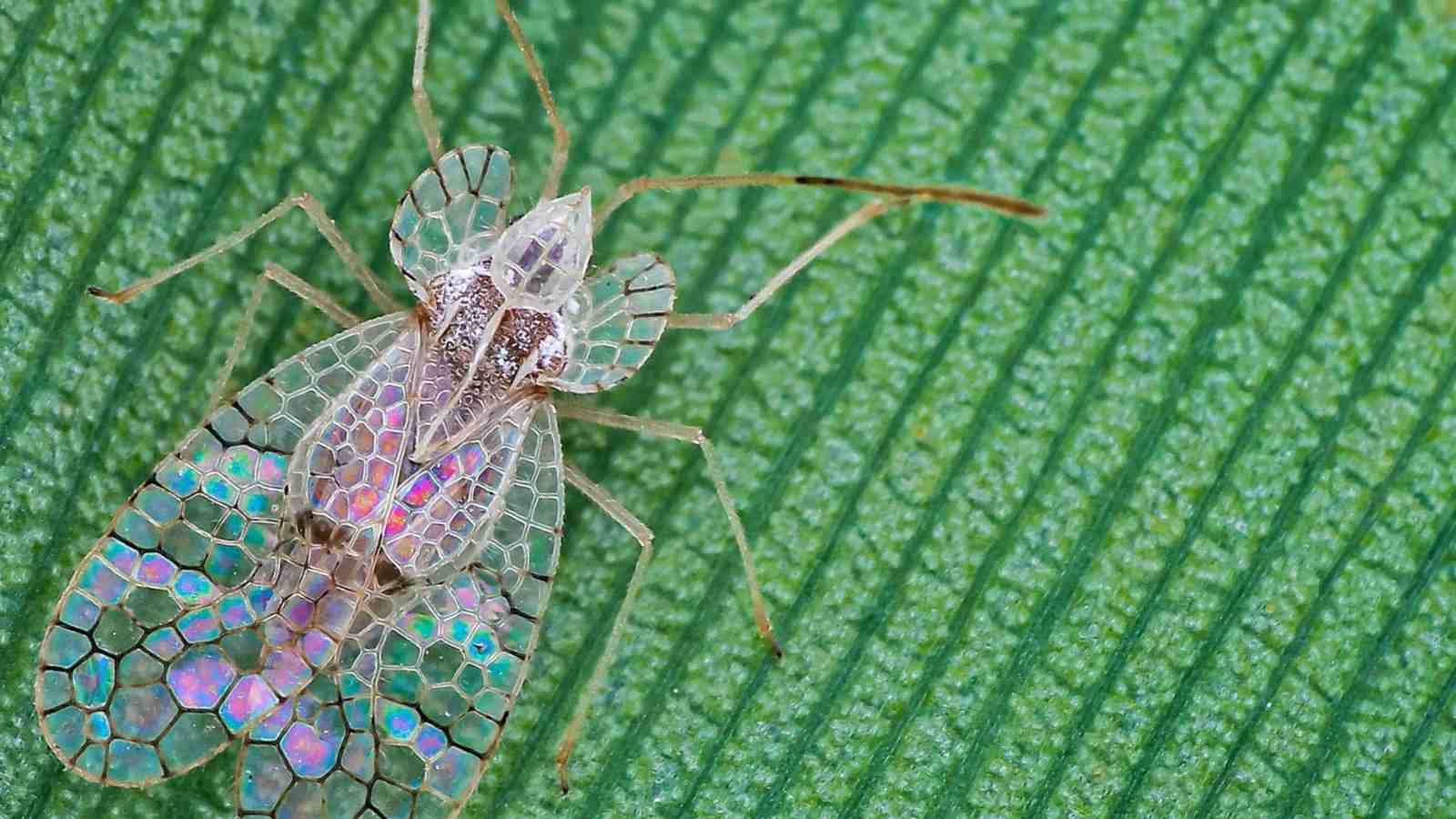
Lace bugs are common pests that are detrimental to azaleas, causing the leaves to develop a stippled or bleached appearance.
These pests are particularly fond of azaleas growing in sunny conditions, as opposed to the shade they prefer. The underside of azalea leaves becomes dotted with black waste specks, detracting from the shrub’s overall aesthetic appeal.
Spider Mites

Another notorious menace for azaleas is spider mites. They cause the leaves to become yellow and mottled.
If left unchecked, severe infestations can lead to leaf drop. Signs of a spider mite intruder can often be detected by the presence of fine webbing on the underside of leaves.
Root Rot
Root rot is a damaging disease often caused by the fungus Phytophthora, which thrives in poorly drained soils. Early symptoms include wilted, yellow, or blanched leaves.
The only remedy for root rot is prevention; plant azaleas in well-draining soil or utilize raised beds. A soil rich in organic matter, like pine bark or compost, can greatly minimize such risks.
Petal Blights
Petal blights are caused by a fungus that results in spots on the blooms and can cause the flowers to collapse quicker than usual.
The spores are dispersed by rain drops and heavily infected flowers may appear orange due to numerous spore masses. Flower buds may be killed before they get a chance to open at all.
Powdery Mildew
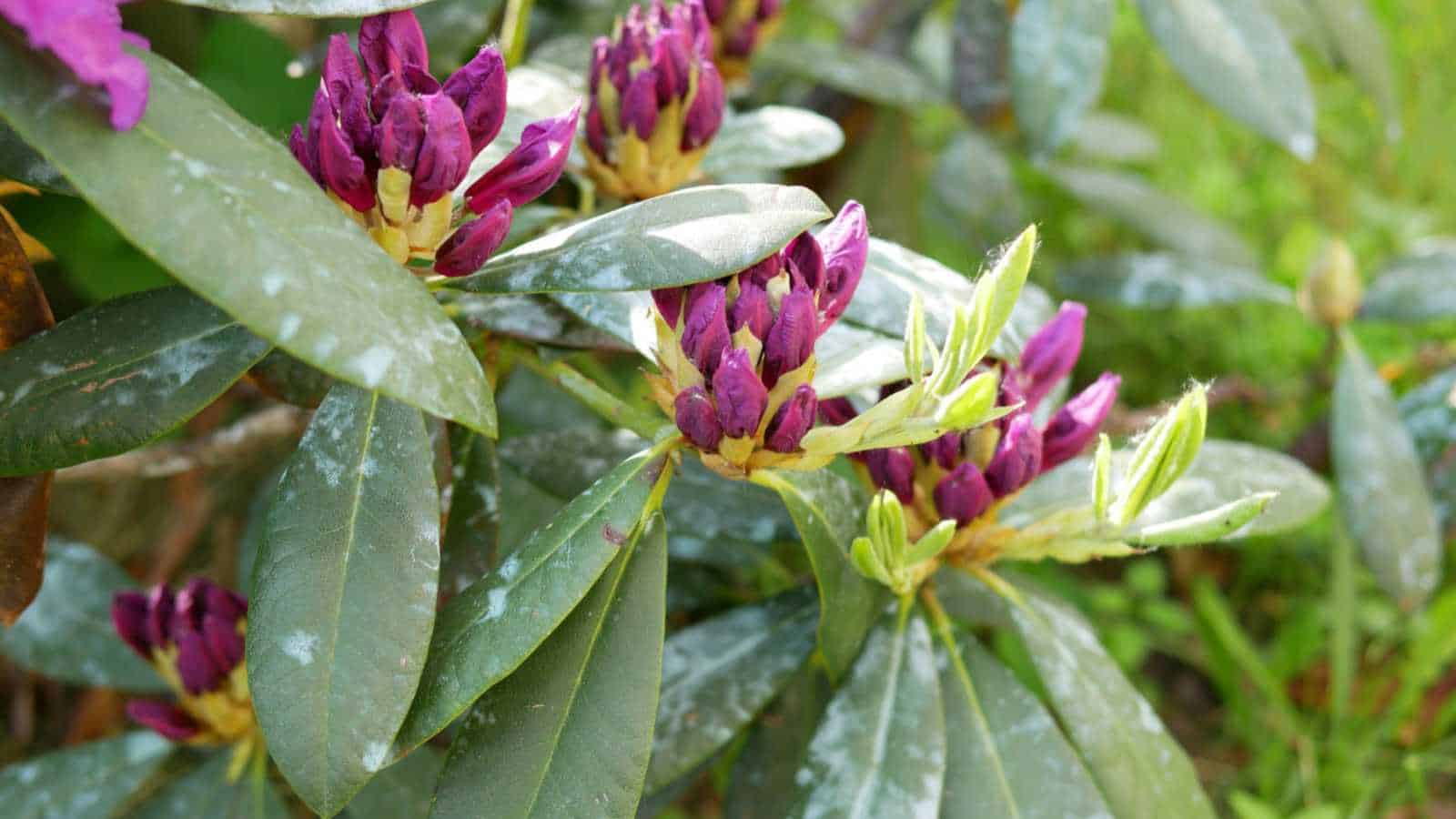
Although azaleas, being genus Rhododendron, generally resist many leaf diseases, they can occasionally suffer from powdery mildew.
This appears as a faint white or gray powdery growth on the upper leaf surfaces. This disease appreciates high humidity, so ensuring good circulation around your azaleas and avoiding overhead watering can help prevent its advance.
Common Plant Problems and Solutions for Azalea
Brown Tips on Leaves
Azalea plants, being members of the genus Rhododendron, can present with brown-tipped leaves – a potent signal of root rot. This condition is often due to excessive moisture in soil that does not possess good drainage.
Ensure your plant is in well-draining soil and consider introducing compost or other organic matter to boost the soil’s structure and enhance drainage. To prevent recurrence next year, try not to plant the top of the root ball too deep.
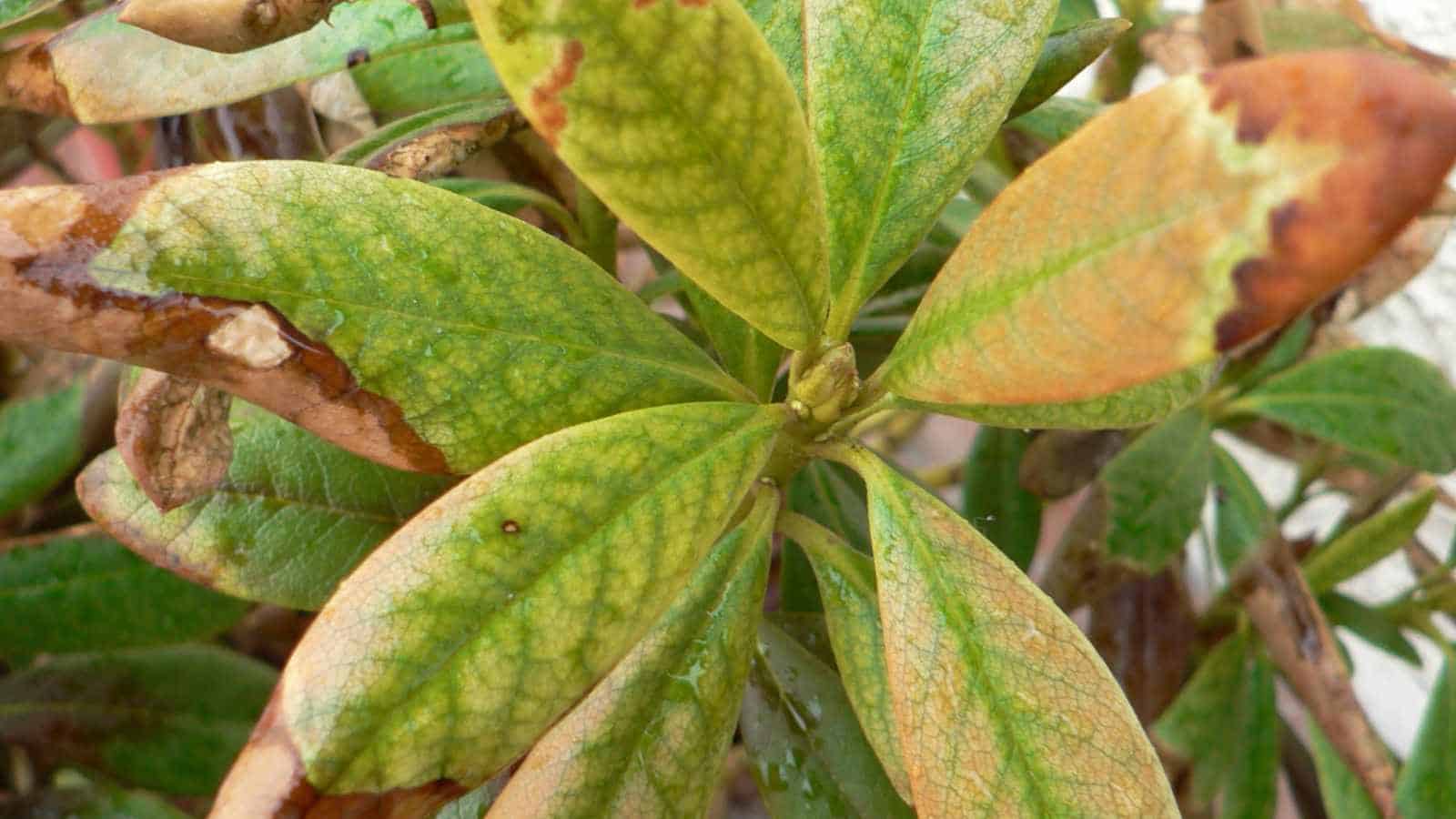
Yellowing Leaves
The yellowing of azalea leaves often indicates a nitrogen deficiency. Nitrogen is a vital nutrient for these shrubs and its absence can lead to this discoloring.
Since azaleas prefer slightly acidic soil, introduce a nitrogen source that doubles as an acidifier, such as sulfur-coated urea.
This can correct the alkalinity of the soil, and with help of pine needles mulch to maintain the soil temperature, the azalea’s lush green color should return.
Other Flower Guides from Planet Natural:
How to Plant, Grow, and Care for Anemone Flower (Windflower)











